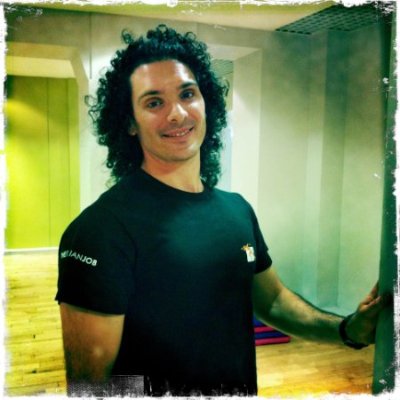The BLOG-Rehab: This is my story – rehab of two hip replacements
This is my story
I am a 40 year old osteopath – personal trainer – sport & deep tissue massage therapist. I used to be a dancer for over 10 years teaching classes in many gyms and enjoying an active lifestyle. Despite never having undertaken intensive weight training, in 2010 I was diagnosed with bilateral hip osteoarthritis.
The surgeon diagnosed me with idiopathic and asymptomatic “femoro-acetabular impingement” due to a possible Legg Calvè syndrome. Complicated words to tell me that the wear and tear process was there over a long period of time and they did not actually know the real or root cause. Before long, my ability to carry out activities of daily living, such as running and walking diminished. Using a bicycle became almost impossible as the hip joint could not move properly. My condition deteriorated to the point that I was unable to walk.
Having a joint replacement procedure was the only possible way for me to return having a normal life. I’m sure readers can imagine what it meant to a 36 years old fit person who trains others for a living to have a total hip replacement.
I had my first hip replacement surgery in December 2012 on the right side and then a second hip replacement surgery in October 2015 on the left side. The dysfunction in the left hip before the latter operation wasn’t as advanced as that of the right hip had been prior to the first operation. This was because I had the operation scheduled 8 months after the mechanical restriction became evident.
Both operations went well; but the real challenge was the rehabilitation period. Surgeons and therapists at the hospital supervised a standardised rehabilitation program which lasted a week. This is the standard and normal medical practice. After this initial course of supervised rehabilitation, I was discharged from the hospital and was handed a rehabilitation program, in the form of an exercise booklet, which detailed an exercise schedule over the next 40 days. That program involved walking on crutches, doing 15 – 20 minutes of stationary bike training and exercises routine to help to regain strength and range of motion around the hip area. I followed the program diligently.
The 40 days program is designed to make the patient walk again and to make sure they can perform activities of normal daily living, such as walking and using the stairs independently.
Now, after having recovered from 2 hip replacements, I can tell you that the rehabilitation period actually takes at least 6 or 7 months.
That is roughly the amount of time someone needs to get all the functionality back. I am talking about regaining full hip joint flexion (within the limit advised by the surgeon), with a good amount of hip abduction. Also the ability to perform sit ups and all those movements where the hip joint is involved. On follow up appointments I have been told by surgeons to work continuously on the “movements”. Having a joint replacement does not mean stopping to move. On the contrary maximum range of motion within the range of safety need to be reached in order to distribute the compression forces of the daily movement across all the surface of the new joint thus avoiding compression forces only in one spot.
The physiological healing time of the different tissues needs to be taken into account. A consequence of joint replacement means part of the bone is missing and replaced with titanium. Muscles need time to regain normal strength around the new joint. After four-five months I still could feel weakness in hip flexion on standing movement (involving activation of ilio-psoas, gluteus maximus and hamstrings) despite the fact I was cycling two/three times a week on a spinning bike.
Also as the therapist and surgeon pointed out, joint replacement results in the complete loss of the proprioceptive nerve endings within the joint. The brain now has to regain proprioception by remapping the information coming from the remaining proprioception nerve ending in the near-by structure of the joint in order to regain balance. This is a more challenging part of a rehabilitation program as it involves fine tuning exercises to target training your brain rather then strength exercises training your muscles.
Having had the condition myself and having undertaken the rehabilitation program to get back to my normal fitness level made me aware of the fact that rehabilitation is a serious matter. Some surgeons told me once that 99% of the time surgery procedures are successful. What really makes the difference in going back to a normal level of fitness is a thorough and effective rehabilitation program.
Nowadays many people enjoy an active lifestyle such as going to the gym, running, cycling. They would like to enjoy it even after having surgical procedures.
For them being active is really important because that represents their mental conceptualised projection of themselves to the world. It is not just for their body, it is a mental thing. Quoting the Romans, most people like to have “mens sana in corpore sano” which means a healthy mind inside a healthy body. This highlights another important concept when we talk about rehabilitation: the importance of the psychological factor in people who underwent surgery and their return to normal daily life routine after the surgery. How they will cope with the new “self” without that feeling of being “disabled”. Most disabilities are exacerbated by psychological problems with medical complication because of the changes that occurred to a person’s life post-disability.
So it is nowadays of utmost importance to offer a rehabilitation program that focuses at patients entire bodies and minds, taking into consideration their needs to perform normal daily life activities as well as their need to go back to their normal daily routine.

